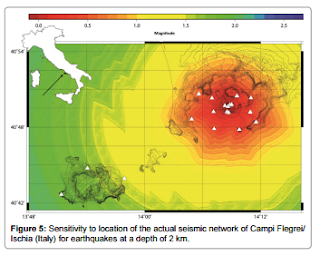Introduction:
Heat and power production is an attractive field
that often collides with environmental aspect. Energy production is anyway so
important that people are willing to accept even the pollution and drawbacks
associated with it. The environmental impact monitoring is therefore
fundamental to reduce the risks. In particular, the ground water quality and
level, the eventual ground deformation and seismicity are the most important
parameters to monitor. Usually, the States legislation provides instruction on
the characteristic of the monitoring systems, especially for mining and
geothermal exploitation. As the subsoil exploitation is often associated to
micro-seismicity, the installation of a seismic network is an important tool
and a cost to benefit analysis is usually required to deploy a network that
meets certain specifications. The seismicity monitoring is useful both to understand the fluid movement in the underground and to plan the injection or pumping rate as a function of the seismicity occurrence. The sensitivity of anetwork to location or detection of earthquakes is a parameter that is always considered in the mandatory guidelines. The sensitivity of a seismic network is defined as the location performance of the network, i.e. the minimum magnitude of an earthquake that can be located using the records of the network itself. The detection performance of a network is, instead, the minimum magnitude for an earthquake to be detected by the network, i.e. the minimum magnitude of an earthquake that is visible at least on one seismogram of the recording network.

Comments
Post a Comment